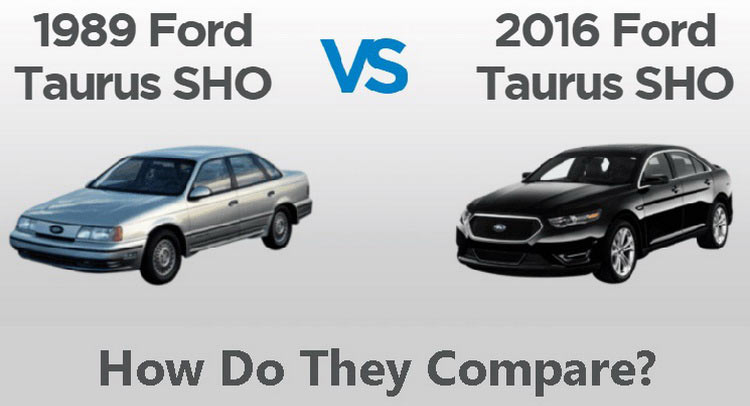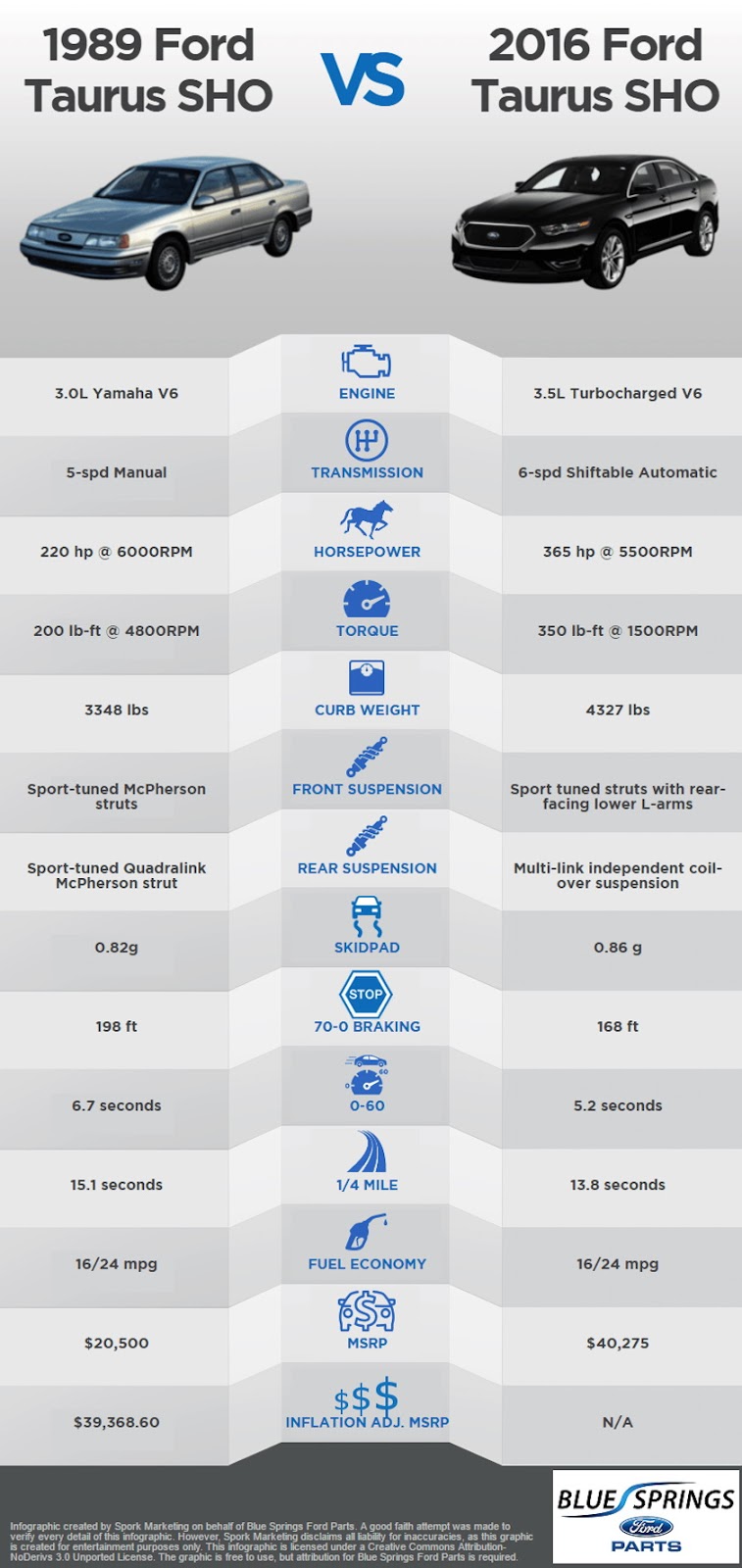When we think about how far cars have come in general in the past couple of decades, it’s easy to forget that all that added tech also translates into extra weight.
Of course, if you were to take a step back and analyze both vehicles, there could only be one winner in terms of safety, performance, comfort, convenience and looks as well.
The current Taurus SHO comes with a 3.5-liter turbocharged V6 engine, mated to a 6-speed automatic, putting down 365 HP and 350 lb-ft (474 Nm) of torque. It weighs about 4,327 lbs (1.9 tons) and costs $40,275 MSRP.
The 1989 model used a 3.0-liter Yamaha V6 engine, putting down 220 HP and 200 lb-ft (271 Nm) of torque with the help of a 5-speed manual gearbox. Its curb weight used to be 3,348 lbs (1,5 tons) and would retail for $20,500 (or $39.368 if we consider inflation).
We could just give you all the other specs right now, but it’s best you check out the chart for yourselves – be ready for the 89 model to not look like that much of a pushover, especially in terms of fuel economy.
“The 1989 SHO was Ford’s attempt to build a fast Taurus,” said Kyle Harris, director at BlueSpringsFordParts. “The 2016 SHO seems more like an attempt to build a Taurus that does everything. Personally, I’d like to see the SHO package divorced from luxury features. That might help address the weight issue.”




